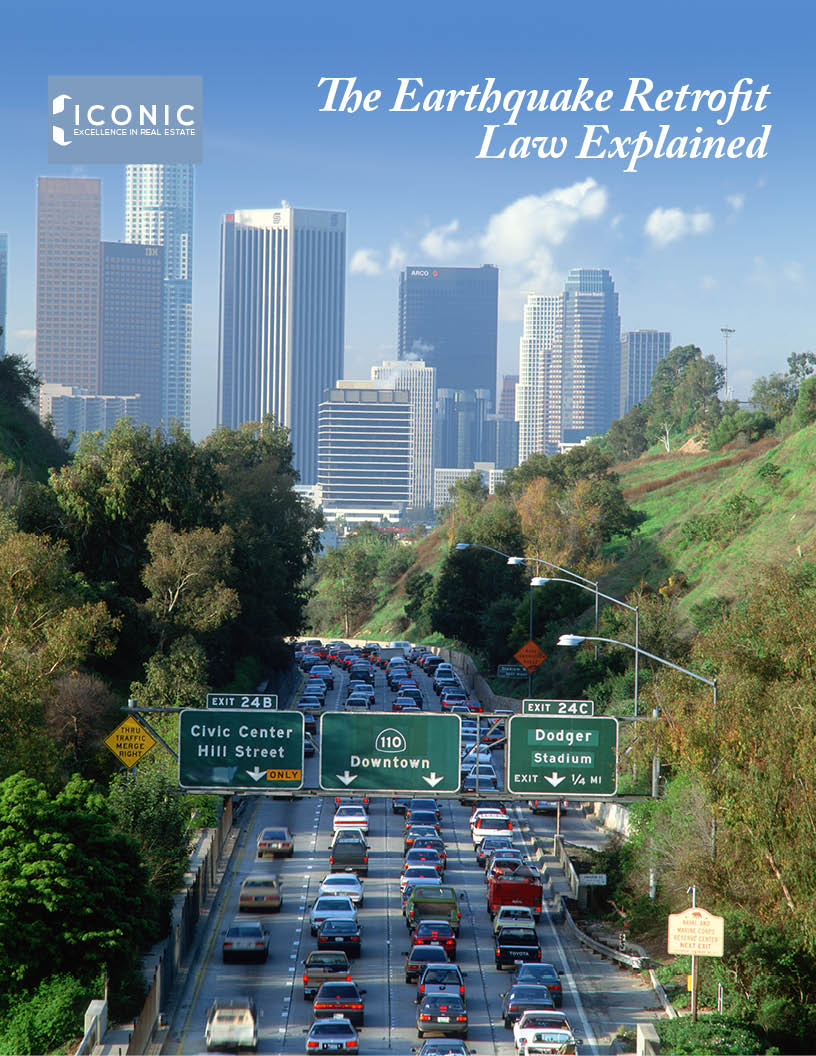Introduction
In October 2015 the Los Angeles City Council unanimously approved one of the nation’s toughest retrofitting ordinances, mandating seismic upgrades aimed at improving earthquake safety in over 14,000 buildings throughout the city. This ordinance directly affects owners and tenants of apartment buildings built prior to 1978 with soft, open, or weak wall lines. This typically corresponds to building sections supported by slender columns with larger tuck-under parking at the ground level. These properties have been deemed to be most at risk in an earthquake event.
In this guide, we’ll help you to understand if and how this ordinance may affect you and your tenants, and how to navigate the complex process of compliance. We believe every owner should be informed.
Overview
Why the proposed law?
Moderate to severe earthquakes are common in Los Angeles and throughout California. The 1994 Northridge earthquake killed 57 people, many resulting from collapses of soft-story apartment buildings, and caused approximately $20 billion in damage. At the time it was considered to be one of the deadliest and most expensive natural disasters in US history.
The likelihood of another major earthquake occurring in Los Angeles is high, and city officials want to minimize both the potential for loss of life and economic impact. City officials acknowledge it is not a question of if, but when.
Who will it affect?
The Los Angeles City Council and Mayor Garcetti’s office recently approved a mandatory seismic strengthening ordinance that affects two groups of buildings known to be vulnerable to earthquake damage. These are:
- Wood framed multi-family buildings with areas of tuck- under parking - with soft line or weak line configurations - that were constructed under permits filed before January 1, 1978.
- Non-Ductile Concrete Buildings constructed prior to January 13, 1977
The “soft story” or soft line/weak line building configuration is common to apartment buildings in Los Angeles, and is known to be especially vulnerable to earthquake damage and potential collapse. The proposed ordinance will require landlords to reinforce and strengthen these properties. The Los Angeles Department of Building and Safety has so far pre-identified approximately 13,000 buildings within the city limits that have a condition.
The ordinance, which is now law, requires owners of vulnerable buildings to complete seismic upgrades within 7 years once they are notified that their buildings must be strengthened. Within 2-years after service of the order the Building Owner must submit to the Building Department a structural analysis and/or plans that demonstrate compliance or include the proposed structural alteration to meet the requirements of Division 93. Within 31⁄2-years after service of the order, property owners must obtain all necessary permits for rehabilitation or demolition.
When will owners be notified?
The ordinance, in it’s current form, has designated priorities to help in the implementation and enforcement. These priorities focus on buildings presenting greatest risk to loss of life first. The priorities are as follows:
Priority I: Buildings with 16 or more units;
Priority II: Buildings with 3 or more stories, and 16 or less units;
Priority III: Buildings not falling under the definitions of Priority I or II.
It is important to note that, once an owner is given notification of retrofit requirements on their property, a notice of work required is recorded on title.
What's involved?
A SWOF (Soft, Weak or Open Front) retrofit will typically include the addition of steel moment frames along the open parking areas and are designed to not obstruct the existing parking. Walls surrounding the parking areas may require strengthening with plywood structural panels before new finishes or stucco is re-applied.
How much will it cost?
The cost of such retrofits vary widely and will likely range between $30,000 to $250,000 for wood-frame buildings, and likely over $1 million for concrete structures.
Costs are totally dependent on the specific building configuration and scope of work. Construction durations for soft-line strengthening are often 60-days (+/-) and must be carefully planned to avoid tenant relocation or habitability disruptions.
The design, acquisition of building permits, tenant notifications, and construction coordination can be compressed into 6-months but often take longer due to variables.
What are the current codes?
The building codes currently in force 2014 LABC and 2013 CBC do not provide perfect guidance to Engineers on how to address SWOF conditions. Additionally, there are a variety of methodologies in existance to improve building strength and stability. This has been a source of confusion among practicing structural engineers and building officials.
The ordinance draws from model codes but is expected to only target localized SWOF deficiencies and not the entire building (except in rare cases) - thereby limiting the scope and the costs. The performance outcome is to create a more earthquake resilient Los Angeles.
Are there any financing options?
New funding and financing options are developing such as:
A proposal is currently before the City Council that would allow owners of rent controlled properties subject to the ordinance to pass a portion of the costs to tenants through a rental increase. The exact dollar amount and time-frames have not yet been finalized, but the Council is debating a rate of between $38 and $50 per month for five or seven years. At best, this option will allow owners to recapture some of the actual costs associated with retrofit.
Property owners may also elect to pursue creative financing solutions - essentially secondary loans - available through lending programs that include the AllianceNRG PACE.
Governor Brown recently vetoed AB428, a bill which would have provided owners with a 30% tax break on the costs of retrofit. New legislation may arise to fill this gap.
